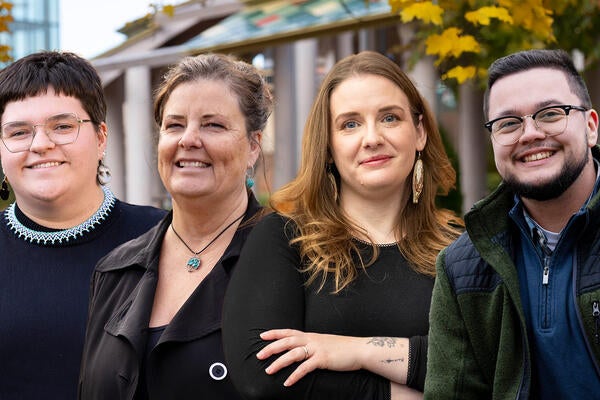
Finding your way after a stroke
Stroke patients use innovative exercise bikes hooked up to Google Earth’s virtual world to rehabilitate body and mind in Waterloo lab

Stroke patients use innovative exercise bikes hooked up to Google Earth’s virtual world to rehabilitate body and mind in Waterloo lab
By Christine Bezruki Faculty of Applied Health SciencesTucked in the corner of a lab in B.C. Matthews Hall is a piece of equipment set to change the way patients recover from stroke.
While it may not look like much to the untrained eye, the exercise bike and connected video screen is the prototype for an innovative rehabilitation technology that uses Google Earth to improve stroke patients’ cognitive skills.
Good for the heart; good for the brain
“Over the last several years people have become increasingly aware that physical exercise is not just good for the heart and lungs, but it’s also good for the brain,” says Bill McIlroy, Chair of the Department of Kinesiology, and lead researcher on the project.
 Following a stroke, exercise has been shown to improve brain function by encouraging neuroplasticity. McIlroy and his team of researchers are out to prove that combining exercise with cognitive engagement will improve patients’ attention and working memory as well as their physical recovery.
Following a stroke, exercise has been shown to improve brain function by encouraging neuroplasticity. McIlroy and his team of researchers are out to prove that combining exercise with cognitive engagement will improve patients’ attention and working memory as well as their physical recovery.
“We thought current exercise programs were missing an opportunity,” says McIlroy. “If you put a patient on a bike and they are staring at a blank wall, they are not engaging their mind. The ideal situation would be to maximize the benefits of exercise while retraining the brain.”
To do this, the team developed a method to synchronize movement on an exercise bike with movement on Google Earth’s street view maps. The result? A game-based physical and cognitive exercise test like no other.
A new kind of exercise program
As participants pedal on the bike, they are dropped into Paris or another major city and given navigation tasks, like finding their way to the Eiffel tower.
The way-finding tasks mimic the process of searching for an address or location in everyday life and challenge a participant’s attention, working memory and visuospatial processing. The team uses an eye tracker and EEG cap to measure cognitive processes.
“We could have used other tests,” says McIlroy, “but the difference here is that it’s a natural coupling. It’s intuitive. It’s what you do in everyday life — engaging your brain and body in a unified way. Only here we are controlling it in a way that is possible for people who have had a stroke.”
Supported by funding from the Canadian Partnership for Stroke Recovery the team has tested healthy individuals and is now piloting on stroke patients.
If all goes according to plan, McIlroy hopes to see this technology expand its scope beyond stroke recovery.
“Because the tests gauge the spatial awareness and navigation abilities a person needs in daily life, the program could be used with those with dementia or traumatic brain injuries. The future possibilities are really exciting,” says McIlroy.

Read more
Here are the people and events behind some of this year’s most compelling Waterloo stories

Read more
Researchers awarded funding to investigate ecology, climate change, repatriation, health and well-being through cultural and historical lens

Read more
15 University of Waterloo researchers have been named to the annual Highly Cited Researchers™ list for significant contributions to their specific fields of research
The University of Waterloo acknowledges that much of our work takes place on the traditional territory of the Neutral, Anishinaabeg, and Haudenosaunee peoples. Our main campus is situated on the Haldimand Tract, the land granted to the Six Nations that includes six miles on each side of the Grand River. Our active work toward reconciliation takes place across our campuses through research, learning, teaching, and community building, and is co-ordinated within the Office of Indigenous Relations.